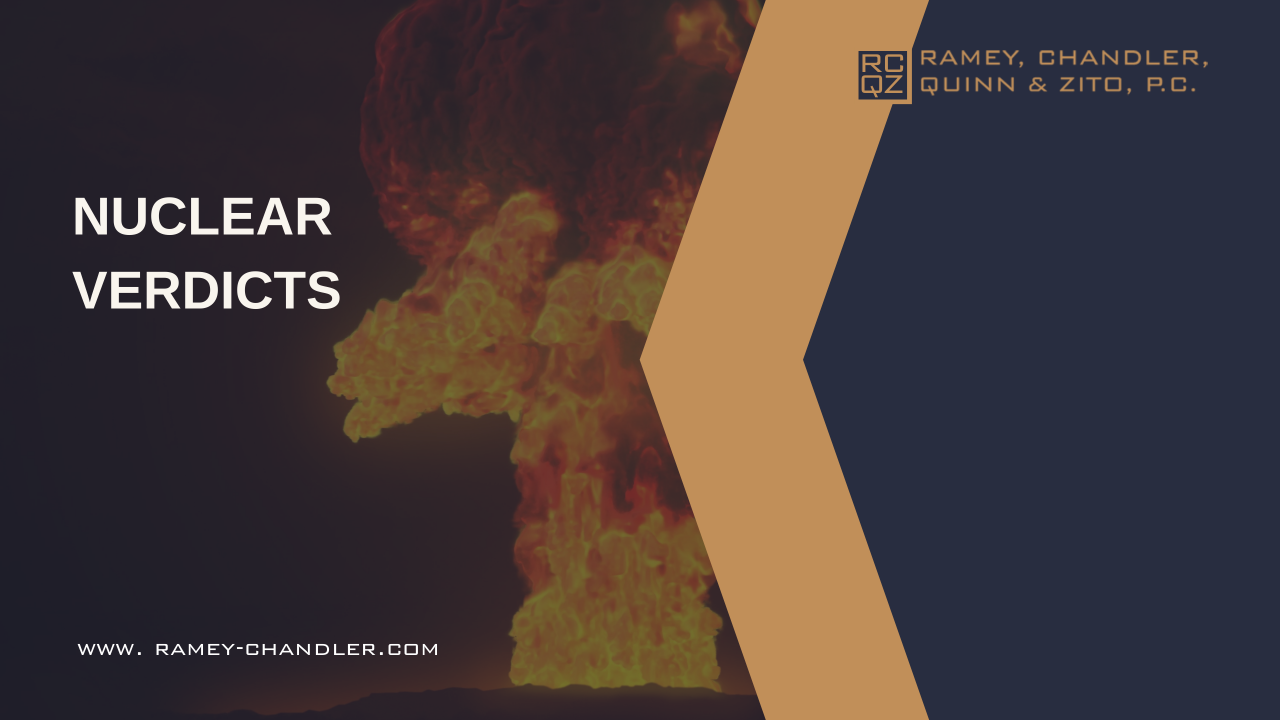Nuclear Verdicts
The subject of Nuclear Verdicts triggers intense emotional reactions from claims professionals.
While there may be some dispute as to what constitutes a Nuclear Verdict, all agree that they know it
when they see it. It is generally thought of as an exceptionally high jury award above what should be a
rational or reasonable amount. Changing influences in our culture have contributed to the rise in
Nuclear Verdicts. These are a few of them.
1. Social Media
The rise and influence of social media would be at the top of the list. Studies of shown that
social media is profoundly changing the way many people interact. Among other things, social media
enables users to influence one’s perception of individuals and institutions. One millennial poll suggests
that only 19% agree that most people can be trusted. The absence of trust plays a significant role in how
millennial jurors approach their decision making. Because the landscape of social media platforms
remains littered with misinformation on both sides, it has created distrust across the board. A juror’s
distrust with big corporations is a direct result of this phenomenon.
2. Corporate Distrust
This distrust in corporations feeds into the hands of Plaintiff’s lawyers utilizing a strategy known
as “Reptile Theory” to elicit anger out of jurors. It persuades the jury to connect the dots between the
violation a Plaintiff’s attorney crafted Safety Rule that, if not followed by the Defendant, places the jury
and community at danger. In turn, this effect incites Jurors to return a high verdict to prevent the
danger.
3. Anchoring
Another technique of “Anchoring”; evaluating economic damages like physical pain and mental
anguish and turning them into a quantity is difficult for jurors who have no background or experience in
valuing an injury. Unless given reference points, jurors have no option but to take the argument from
Plaintiff’s counsel at face value and determine whether it is credible. Knowing this fact, Plaintiff’s
counsel’s use a large anchor letting the jury know a substantial verdict is sought. Plaintiff’s counsel make
use of the saying of the late Norman Vincent Peale: “Shoot for the moon. Even if you miss, you’ll land
among the stars.” Without guidance, or previous experience, the jurors use the Plaintiff’s counsel’s
number as a starting point for awarding monetary damage: to counter Plaintiff’s Counsel’s attempts at
psychological manipulation, defense counsel should stress core principles like responsibility,
reasonableness, and common sense. The theme of the defense should tie into these core principles. In
addressing non-economic damages, counsel should consider these questions:
1. How has the accident truly impacted the Plaintiff’s life?
2. How would an award of money truly impact the Plaintiff’s life?
3. And most importantly, what is the Plaintiff’s life really like after the accident and what would be
the value of money to the Plaintiff?
To that end, counsel should lead the jury through a typical day in the Plaintiff’s life, what he or she can
still do, and then stress that the amount awarded must be fair and reasonable to this specific Plaintiff.
The goal is to have to the jury focus on actual evidence when it comes to making a quantitative
judgement about monetary damages and not simply an emotional reaction to the Plaintiff’s plight.
By accepting you will be accessing a service provided by a third-party external to https://ramey-chandler.com/

